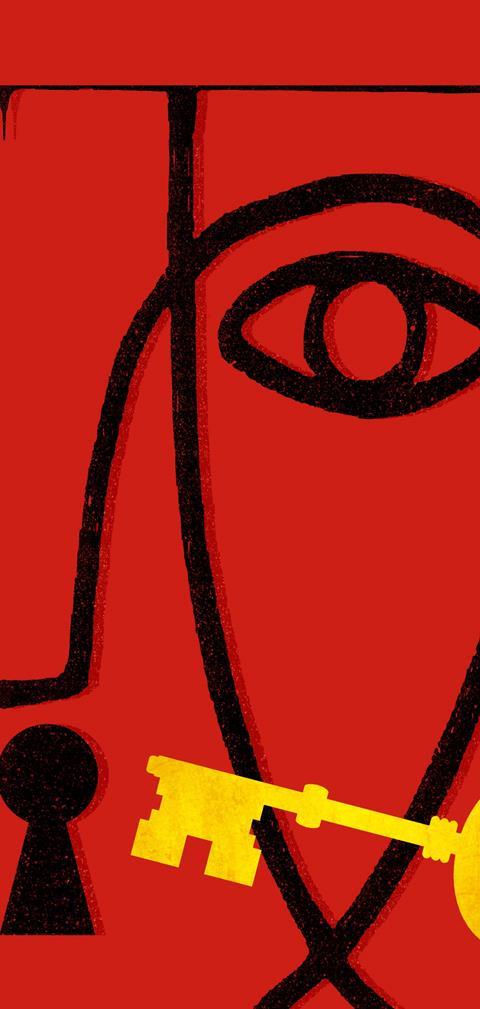New guidance aimed at increasing transparency in the Court of Protection will mean substantially more of these judgments are published. But will it make it harder to identify which ones are significant, asks Patricia Wass

The Court of Protection, or ‘the Secret Court’, as the popular press like to portray it, has come under increasing pressure to make its judgments more transparent.
In April 2013, it emerged that a woman had been ‘secretly jailed’ for contempt of court because she had defied a court order by removing her father from a care home. When the case (SCC v LM) became public, practice directions were issued for contempt cases, to avoid this situation happening again. Sir James Munby, president of the Family Division, was put under pressure by the government to consider the court’s policy on publication of its decisions.
This has led to guidance being issued by the president, which addresses not only judgments of the Court of Protection (CoP), but also of the family divisions of the county courts and the England and Wales High Court. The practice guidance was issued on 16 January 2014 and took effect from 3 February 2014. It will inevitably bring about a significant change in substantially increasing the number of judgments available for publication, according to Sir James Munby. He also said that the guidance is just the first of several steps towards greater transparency.
He said: “In both courts, there is need for greater transparency to improve public understanding of the court process and confidence in the court system. At present, too few judgments are made available to the public, which has a legitimate interest in being able to read what is being done by judges in its name. The guidance will have the effect of increasing the number of judgments available for publication (even if they will often need to be published in appropriately anonymised form).”
The current rules
The statutory regime governing the CoP mirrors the one longstanding common law exception to the principle that justice must be done in open court. The applicable rules are the Court of Protection Rules 2007 (CoPR 2007). The “general rule” is that the CoP sits “in private”. The meaning of a private hearing, and the persons entitled to attend, are set out in rule 90(2).
Once the floodgates are opened, and we have a BAILII website publishing routine and very similar judgments, will the press really be interested?
The media (or any person) may be permitted to attend a private hearing, or part of it. Furthermore, the court may order a hearing or part of it to take place in open court (rule 92(i)), but if it does so, it retains wide statutory powers to order reporting restrictions to protect identities and/or restrict publication of information (rule 92(2)).
On an application to admit the media or conduct proceedings in public, pursuant to rule 93, the court should undertake a two-stage approach:
- is there a “good reason” for permitting the media’s attendance; and, if so
- where does the balance lie between the competing European Convention of Human Rights engaged (namely the article 8 rights of the individual who is subject to the proceedings and, where relevant, the article 8 rights of their family and article 10 rights of the media).
Under the CoPR 2007, a non-party may inspect a copy of a judgment or order given or made in public (rule 17(i), subject to rules 20 and 92(2)). A non-party may apply to inspect other documents on the court file, and the court must consider editing them before allowing such an application (rule 17(2)-(4)). It should be noted that a party is bound by a collateral obligation in respect of documents disclosed to it for the purpose of proceedings, rule 18(i), save where it has been read or referred to at a public hearing, or the court gives permission.
In respect of reporting, the rules were made under section 51 of the Mental Capacity Act 2005 (MCA 2005). Of particular relevance is section 51(2)(h), which says that rules may provide “for enabling or requiring the proceedings or any part of them to be conducted in private and for enabling the court to determine who is to be admitted when the court sits in private and to exclude specified persons when it sits in public”.
It should also be noted that in cases where the adult concerned lacks capacity in certain issues, but not in others, the matter is likely to take place in the High Court (Family Division) (which now has its separate guidance notes for transparency in respect of the publication of its judgments) and not the CoP, because the former can make orders under the inherent jurisdiction as well as the MCA 2005.
New guidance
There are two practice guidance notes – one for England and Wales High Court (Family Division) decisions and one for England and Wales High Court (Court of Protection) decisions.
This article concentrates on the latter – the practice guidance titled Transparency in the Court of Protection.
The legal framework applicable to the publication of judgments is contained in section 12 of the Administration of Justice Act 1960. This states that it is a contempt of court to publish a judgment in a CoP case, unless either the judgment has been delivered in public or, where delivered in private, the judge has authorised publication. In the latter case, the judge normally gives permission for the judgment to be published on the condition that the published version protects the anonymity of both the person who is the subject of the proceedings, and members of their family. In every case, the terms on which publication is permitted are a matter for the judge, who will set these out at the start of the judgment.
The new guidance applies to all judgments in the CoP delivered by the senior judge, nominated circuit judges and High Court judges. The guidance distinguishes between two classes of judgment:
- those that the judge must ordinarily allow to be published; and
- those that may be published.
The guidance says that permission to publish a judgment should always be given whenever the judge concludes that publication would be in the public interest, and whether or not a request has been made by a party or the media.
Where a judgment relates to matters set out in the schedule below, and a written judgment already exists in publishable form, or the judge has already ordered that the judgment be transcribed, the starting point is that permission should be given for the judgment to be published, unless there are compelling reasons why it should not be.
Schedule
Judgments arising from:
- any application for an order involving the giving or withholding of serious medical treatment and any other hearing held in public;
- any application for a declaration or order involving a deprivation or possible deprivation of liberty;
- any case where there is a dispute as to who should act as an attorney or deputy;
- any case where the issues include whether a person should be restrained from acting as an attorney or a deputy or that an appointment should be revoked or his or her powers should be reduced;
- any application for an order that an incapacitated adult (P) be moved into or out of a residential establishment or other institution;
- any case where sale of P’s home is in issue;
- any case where a property and affairs application relates to assets (including P’s home) of £1m or more or to damages awarded by a court sitting in public;
- any application for a declaration as to capacity to marry or to consent to sexual relations; or
- any application for an order involving a restraint on publication of information relating to the proceedings.
In all other cases, the starting point is that permission may be given for the judgment to be published whenever a party or an accredited member of the media applies for an order permitting publication, and the judge concludes that permission for the judgment to be published should be given.
When a judge is deciding on whether to publish a judgment, they must have regard to all the circumstances; the rights arising under any relevant provision of the European Convention on Human Rights, including articles 6 (right to a fair hearing), 8 (respect for private and family life) and 10 (freedom of expression); and the effect of publication upon any current or potential criminal proceedings.
The guidance also sets out who will be named in the published documents. In all cases where a judge gives permission for a judgment to be published, the following guidance is given.
- Public authorities and expert witnesses should be named in the judgment approved for publication, unless there are compelling reasons why they should not be so named.
- The person who is the subject of proceedings in the CoP and other members of their family should not normally be named in the judgment approved for publication unless the judge otherwise orders.
- Anonymity in the judgment as published should not normally extend beyond protecting the privacy of the adults who are the subject of the proceedings and other members of their families, unless there are compelling reasons to do so.
When a judge is deciding on whether to publish a judgment, they must have regard to all the circumstances; the rights arising under any relevant provision of the European Convention on Human Rights
Unless the judgment is already in anonymised form, any necessary anonymisation of the judgment shall be carried out as the judge orders.
The judge will also need to consider who should be ordered to bear the costs of transcribing the judgment, unless the judge otherwise orders.
- In cases where a party or an accredited member of the media applies for an order permitting publication, then the cost of transcribing the judgment shall be borne by the party or person applying for the publication of the judgment.
- In other cases, the cost of transcribing the judgment shall be at public expense.
It should also be noted that, where permission is given for a judgment to be published, the version of the judgment approved for publication shall be made available, upon payment of any appropriate charge that may be required, to any person who requests a copy. There is also guidance given as to which judgments should be placed on the British and Irish Legal Information Institute (BAILII) website.
An example from abroad
As a matter of comparison, this new guidance is some years behind how judgments are made accessible and transparent in, for example, Australia.
In Australia, the court recognises that the accessibility of its judgments to the public is very important. It commits the resources required to ensure that most final judgments delivered are anonymised and published consistently with section 121 of the Family Law Act 1975 (FLA 1975). Beginning in 2007, virtually all judgments, after anonymisation, are published in full text on the Australian Legal Information Institute (AUSLII) website. This policy has enabled the court to better respond to the interest and concerns of the public about particular cases highlighted in the media.
However, it should be noted that section 121 of the FLA 1975 makes it a criminal offence – except in very limited circumstances – to publish or distribute a report or part of a case, including information contained in a judgment, which identifies parties, related or associated persons, witnesses or others involved in the case. The section also sets out certain limited defences to criminal liability. An example is where the court has expressly authorised the publication.
A risk of overkill
It will be interesting to see what the appetite of the general public and the media will be once the BAILII website has published an increased number of judgments. At the moment, the website usually only publishes judgments which have something significant to say, and are of general importance to those concerned. Once the floodgates are opened, and we have a BAILII website publishing routine and very similar judgments, will the press really be interested? How will one identify what the important and significant judgments are in the future, when we have a large number of cases filling up the BAILII website which are probably only of interest to the parties to the proceedings?
The president has confirmed that the new guidance is just the first in an incremental approach to the issue of transparency in the CoP. He has advised that this will be followed by further guidance and, in due course, more formal practice directions and changes to the rules (the CoPR 2007 and the Family Procedure Rules 2010). However, changes to primary legislation are unlikely in the near future.








